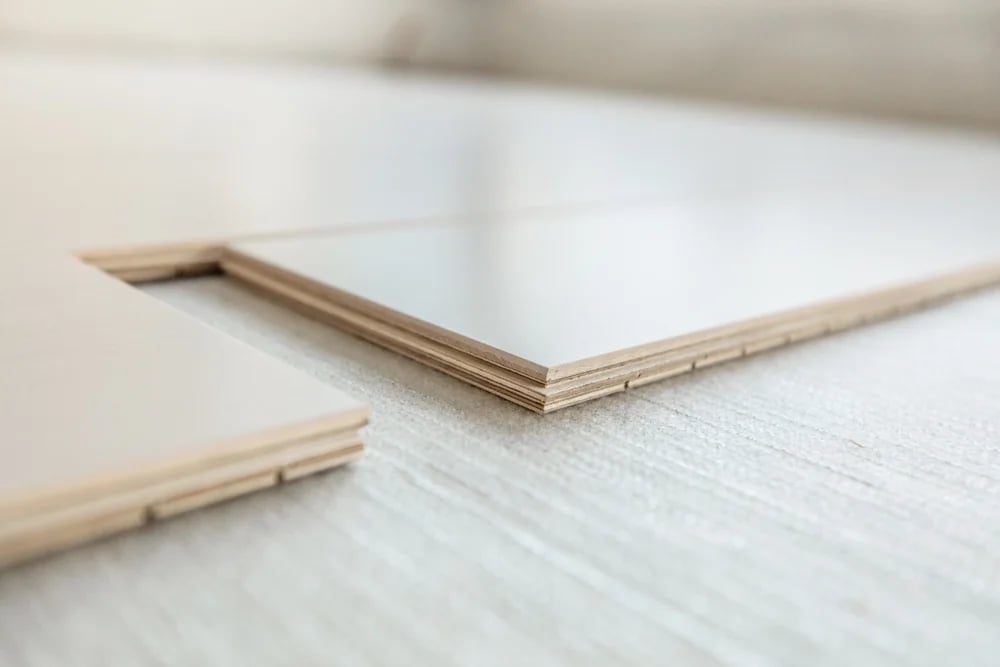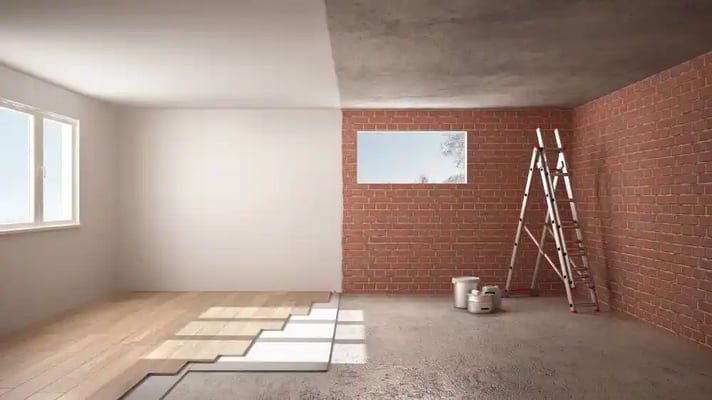5 Types of Subfloor Materials Used in Construction Projects

Flooring systems play an important role in any construction. These structures carry the weight of several components, such as interior walls, furniture, appliances, and the floor itself. An adequate flooring system will offer a higher loading capacity, making your building a safer place.
Flooring systems are made from several layers, to provide integrity and proper functioning:
- Joist: This is the first component of the flooring system. It is located at the bottom and supports the weight of the entire floor. Not all floors require joists - concrete floors are one example.
- Subfloor: This is the structurally sound layer, which is the foundation beneath the flooring material.
- Underlayment: This component is used in some flooring systems as a smooth flat surface for the subfloor. It consists of a thin layer of plywood, cement fiberboard, or cement board.
- Finished floor: this is the decorative top layer of flooring. Common flooring materials include hardwood, laminate, and various types of tiles.
This article describes the second layer of a flooring system: the subfloor. This can be a continuous structural surface over the joists, or a concrete slab that serves as a foundation for the finished floor layer. The subfloor is considered a structural layer, and it should not be mistaken for underlayment (the layer between the subfloor and the finish flooring).
Wood Plank
Wood planks are a traditional subflooring material, but they have been mostly replaced by plywood. Planks measure 1x6, they are made from softwoods such as pine, and they are nailed into wood joists with standard box nails. However, they tend to loosen over time, causing squeaky floors. Ring shanks and fluted subflooring nails are a better option since they resist pulling out. Homes that were built with wood plank subfloors are usually remodeled with particle board or hardboard underlayments, to smooth the surface for finishing layers.
Choose the Right Construction Materials for Your Building Project!
Plywood
Plywood is considered the most popular material used for subflooring, it has been used since the 1950s and remains one of the top choices for contractors. Standard plywood works perfectly fine as a subflooring material, but the best option is ¾” tongue-and-groove plywood subflooring. This system has interlocking tongue-and-groove edges, which help prevent movement along the panel edges, resulting in a stiffer floor.
Plywood panels are typically glued to the floor joist with construction adhesive, and then fixed with ring shanks or fluted subflooring nails. Thinner subflooring (½” or 5⁄8” plywood) may be suitable for low-traffic floors with carpeting or resilient flooring finishes. Thicker subflooring is recommended for hardwood, and necessary for floor tiles.
Oriented strand-board
Also known as OSB, oriented strand board is a popular subflooring material. OSB is similar to plywood subflooring, it has the same installation process, and it offers similar performance. However, OSB can often achieve lower costs than plywood.
Concrete
Concrete subflooring uses slabs, which provide a hard, durable, steady, and often smooth subfloor. Finishing floorings such as tiles and stones can be directly installed over concrete, but in most cases underlayment is necessary.
Concrete is not impervious to water or vapor. Therefore, when installed in moisture-prone areas such as basements, concrete requires a moisture barrier. Solid hardwood floorings are not recommended over concrete in basements or anywhere below grade, even with moisture barriers. Concrete presents some challenges when it comes to temperature and hardness since it conducts building heat into the ground and is almost impossible to nail into.
Mixed Subflooring

There are cases in which a concrete slab is paired with plywood or OSB elements to create a composite subflooring. One method includes fastening 2” sleepers over the concrete and covering them with plywood subflooring. Another method consists of laying down a floating subfloor made with tongue-and-groove OSB panels, adhered to a base layer of plastic or rigid foam insulation.
This base serves as a moisture barrier from concrete dampness, and OSB works as a flat subfloor ready for finishing layers. For those considering the final layer on top of these subflooring options, exploring the various types of flooring can help you make an informed decision.
Best Subflooring Material for Finished Floors
| FINISHED FLOOR | SUBFLOOR | REASON |
|---|---|---|
| Tile | Concrete Plywood with cement board underlayment |
Requires a hard surface to avoid flexing which can lead to cracks |
| Hardwood | Plywood | Easier installation and compatibility |
| Laminate | Plywood with a thin plywood underlayment | Similar to hardwood but thinner, the underlayment will protect the laminate from dents and ridges |
Conclusion
Selecting a proper subflooring will be crucial for minimizing future issues and having to spend money and time on repairs. Some tips to consider when installing a subflooring include:
- When using plywood or OSB, keep sheets as large as possible and rest the edges on top of the joist. Use staggering to avoid intersections of four corners.
- Consider expansion and contraction of construction materials: leaving a ⅛” gap between sheets and walls is recommended.
FAQs
A subfloor is the structurally sound layer that serves as the foundation beneath the finished flooring material. It is crucial because it carries the weight of interior walls, furniture, appliances, and the flooring itself, ensuring the stability and safety of the building.
When selecting a subfloor material, consider factors such as:
- The type of finished flooring you plan to install.
- The moisture levels of the area (e.g., basements may require moisture barriers).
- The load-bearing capacity required for your building.
- Your budget and the overall cost of materials and installation.
Mixed subflooring combines concrete slabs with plywood or OSB elements. This approach can include fastening sleepers over concrete and covering them with plywood or using a floating subfloor made from OSB adhered to a moisture barrier. This method helps to mitigate moisture issues while providing a flat surface for finishing layers.
Yes, concrete is commonly used as a subflooring material, especially in basements or commercial buildings. It provides a hard and durable surface but requires a moisture barrier in moisture-prone areas. Finishing materials like tiles can be installed directly on concrete, but underlayment is often necessary.

Anuj Srivastava
Anuj Srivastava is a principal partner at NY Engineers. He is known for his MEP franchise market knowledge. Anuj is currently leading a team of 100+ MEP/FP engineers and has successfully led over 1500 franchise projects in the US.
Join 15,000+ Fellow Architects and Contractors
Get expert engineering tips straight to your inbox. Subscribe to the NY Engineers Blog below.



